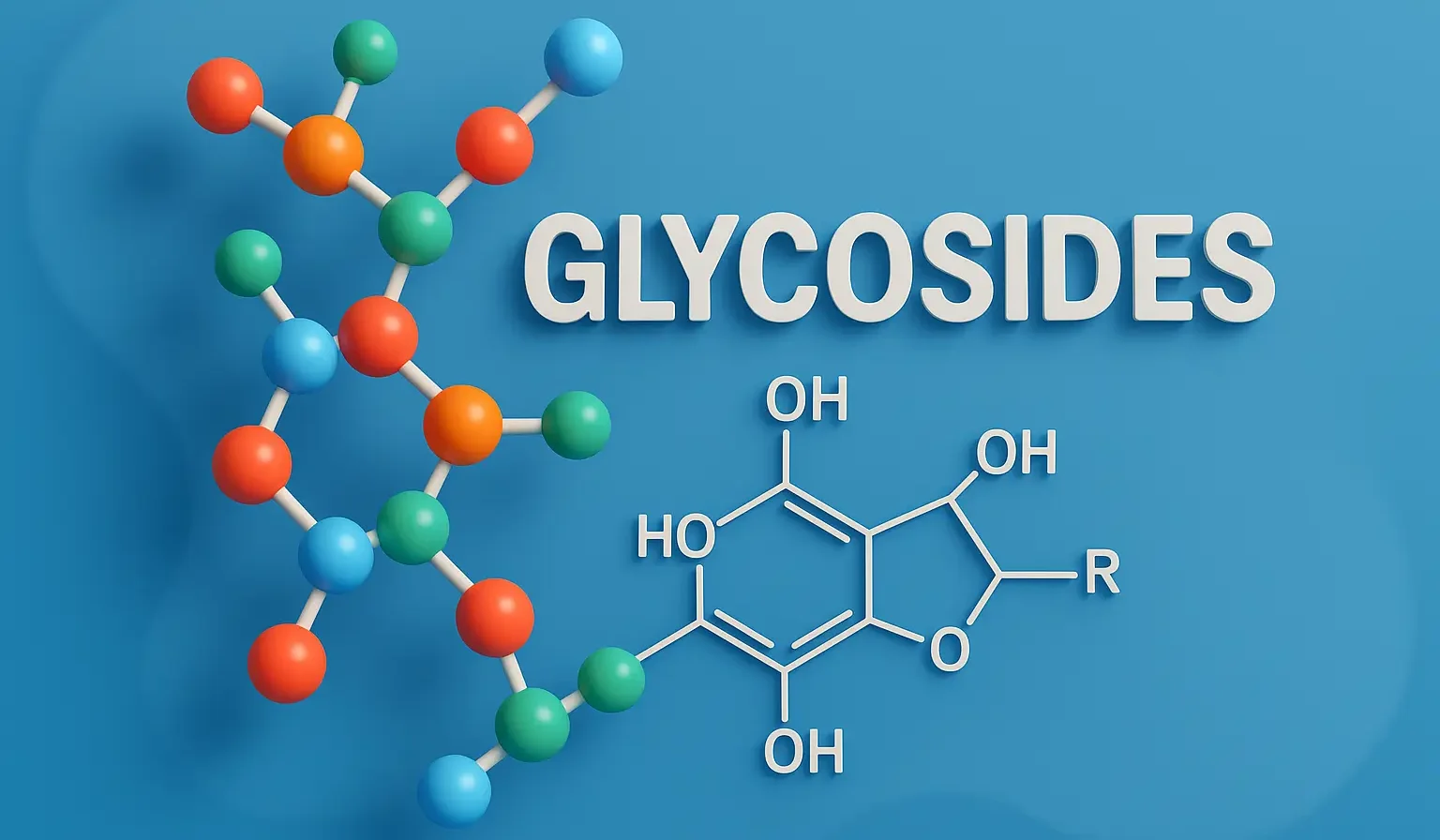Introduction to Glycosides:
Glycosides are bioactive compounds where a sugar (glycone) is bonded to a non-sugar (aglycone). They are widely found in plants and used for therapeutic, coloring, and flavoring properties.
Definition & Structure of Glycoside:
- General Structure: Composed of a sugar (glycone) linked to a non-sugar moiety (aglycone) via a glycosidic bond.
- Diversity: The aglycone determines the compound’s biological activity and can be phenolic, steroidal, terpenoid, etc.
Biological Functions in Plants:
- Defense & Storage: Store toxic compounds, activated by enzymatic hydrolysis during tissue damage.
- Regulation: Aid in plant growth, cell signaling, and stress protection.
Pharmacological Applications of Glycosides:
- Drug Prodrugs: Inactive until sugar is removed, enabling controlled release of the aglycone.
- Therapeutic Uses:
- Cardiac glycoside improve heart muscle function.
- Others exhibit laxative, anti-inflammatory, or antimicrobial effects.
Advertisements

